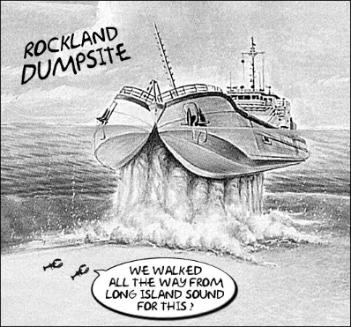
|
Subscriptions Advertising Table of Contents Editorial: Lack of Logic Snowe on Reauthorization of Magnuson-Stevens Act.....................................10 The Height of Frustation.....12 Tuna Outlook........................14 Launchings............................16 DMR...Experimental Halibut Fishery.................20 DMR to Hold Open Meetings.................21 Drill Conductor Course Offered..................22 Categorizing Scallop Fishing Equipment to Understand Hazards........22 Study to Help Prevent Entanglement in Trap Rope..........................23 Talk to Me.............................24 The Boot................................25 Music Review.......................25 Classifieds.............................26 Bill Crowe LAYOUT & DESIGN Lance Lobo TYPESETTING Roberta Lobo STAFF WRITERS Bernice Johnson Paul Molyneaux CONTRIBUTING WRITERS Kittridge Johnson Mike Crowe Lee S. Wilbur SALES MANAGER Bill Crowe |
|
by Paul Molyneaux | |||||
|
The Maine Department of Transportation (MDOT), in partnership with a Swedish-owned company, Sprague Energy, plans to dump 375,000 cubic yards of dredge spoils, at least 14 percent of it contaminated, into the middle of some of the state's most productive lobster grounds. MDOT and Sprague hope to deposit the dredge spoils, from the Mack Point Redevelopment Project, onto a federally managed open ocean disposal site between Rockland and Vinalhaven. "If it's a State mission to have this port, we want it handled responsibly." ---Sue Lessard But the proposal has met with strong opposition from many fishermen and community leaders around western Penobscot Bay. |
| ||||
|
by Mike Crowe | ||||
|
The availability of ice to put in drinks, chill beer, deep fish or for its many other uses is assumed today, at least in America. It was not always so available and still is not in most of the world. In the days before refrigeration to make and preserve it, ice was made available, by by different means. The Romans had used snow for summer cooling. Parisian aristocrats enjoyed ice cream in the 15th century. The royal governer of Virginia had an ice house at his place in Williamsburg. George Washington supervises ice harvesting at Mount Vernon. In America, |

| |||
  
| ||||
